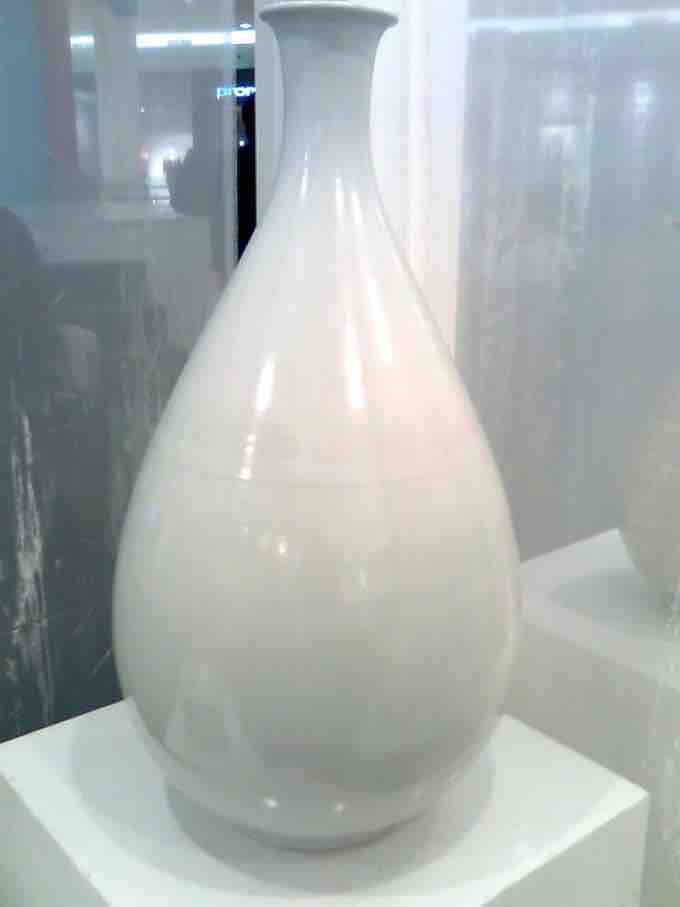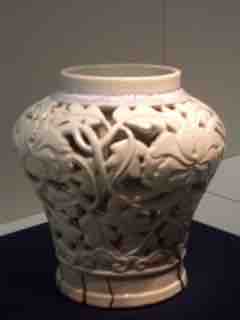Overview: The Joseon Dynasty
During Korea's Joseon Dynasty (1392–1910, often referred to as "Choson"), ceramic wares were considered to represent the highest quality of achievement from imperial, city, and provincial kilns, the last of which were export-driven wares. This era marked the golden age of Korean pottery, with a long period of growth in imperial and provincial kilns and much work of the highest quality still preserved today. Generally, the ceramics of this dynasty is divided into the early period (roughly 1300-1500), middle period (1500-1700), and late period (1700-1910).
Early Period
In the early period, wares were evolved alongside Chinese lines in terms of color, shape, and technique. Celadon, white porcelain, and storage pottery were similar but with slight variations in glazes, incision designs, florality, and weight. The influence of the Chinese Ming Dynasty (1368-1644) in blue and white wares using cobalt-blue glazes could be seen in Joseon pottery, but Joseon work tended to lack the pthalo blue range and the three-dimensional glassine color depth of Ming Dynasty Chinese works. Ceramics from the Joseon period differed from other periods because artists felt that each piece of art deserved its own uniquely cultivated personality.
Simplified designs emerged early on during the Joseon Dynasty. Buddhist designs such as lotus flowers and willow trees prevailed in celadon wares. The form most often seen was that of pear-shaped bottles; also notable were thinner glazes and colorless glazes for buncheong or stoneware.
Joseon dynasty pottery, Korea. Dongguk University Museum, Seoul.
This blue and white porcelain jar with pine and bamboo designs was made in 1489 during the early Joseon Dynasty.
Middle Period
The middle period was marked by the Japanese invasion of Korea in 1592, during which entire villages of Korean potters were forcibly relocated to Japan. This had a permanent effect on the pottery industry in Korea, as craftsmen had to relearn techniques after the masters were gone. This era also saw the prolonged fall of the Chinese Ming dynasty in 1644, after which immigration of some Chinese master potters occurred in southern coastal Korea. Qing coloring, brighter and almost Scythian in enamel imitation, was rejected by Korean potters in favor of simpler, less decorated wares in keeping with a new dynasty that built itself on military tradition.

Joseon white porcelain
White porcelains were preferred and praised more than any other porcelains during the Joseon period.
Late Period
The late period was characterized by the establishment of government-subsidized kilns at Bunwon-ri, Gwangju near Seoul in 1751, as well as the privatization of Bunwon in 1884. Joseon white porcelains became especially popular during this time and are characterized by unpretentious forms, understated decoration, and subtle use of color, reflecting the ideals of Korean Confucian state. Over time, the wares began to assume more traditional Korean glazes and more specific designs to meet regional needs. The rise of white porcelain occurred as a result of Confucian influence and ideals, resulting in purer, less pretentious forms lacking artifice and complexity.

White porcelain jar, 18th century, Korea
The rise of white porcelain occurred as a result of Confucian influence and ideals, resulting in purer, less pretentious forms lacking artifice and complexity.